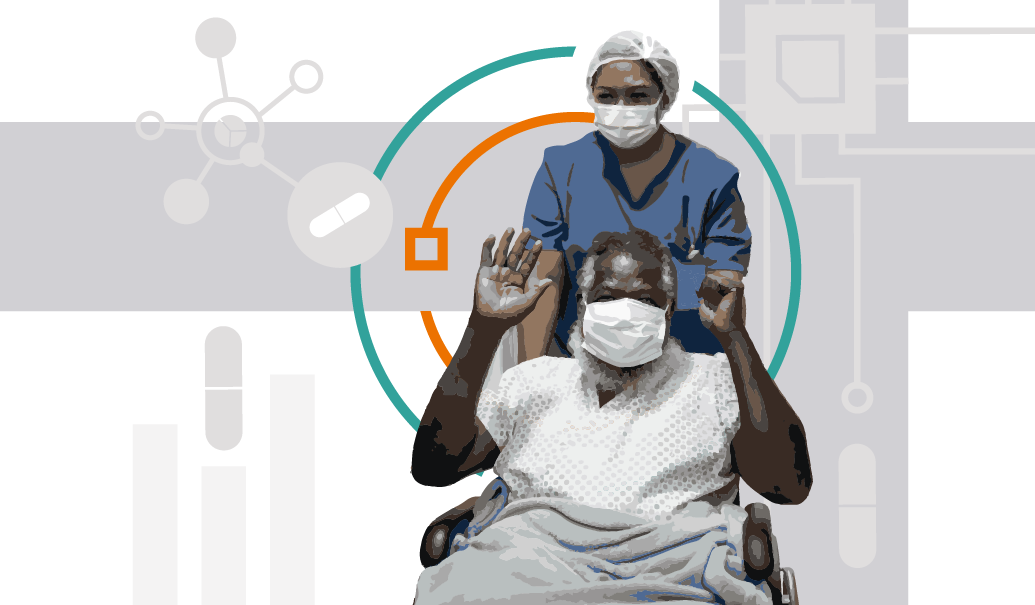Innovation in cell and gene therapies (CGTs) is leading to rapid growth in the space and transforming standards of care—curing chronic diseases, transforming patient lives and reducing burdens on healthcare systems around the world. Indeed, a ZS study suggests the space could grow to more than 70 commercially available CGTs by 2025, compared to the nine currently available. But compared to other products in the life sciences, CGTs face unique commercialization challenges, and that’s translated into products that have underperformed analysts’ early launch expectations.
Novartis’s Kymriah and Gilead/Kite’s Yescarta, for example, were considered potential blockbusters at launch but sales ramped more slowly than expected. On the other side of the equation, demand for BMS’s Abecma was underestimated, and early demand outstripped supply. Moreover, CGTs are typically one-time treatments with high price points. Novartis’s Zolgensma is intended to replace a lifetime of other therapies for children with spinal muscular atrophy. Zolgensma pricing reflects this benefit, but forecasters must plan for high revenue volatility and alternative payment structures.
Autologous and allogeneic cell therapies, in vivo and ex vivo gene therapies
Today’s commercial cell therapies are autologous—that is, they are manufactured using the patient’s own T cells through a process where cell surface receptors are reengineered and then sent back to a treatment center for reinfusion into the patient. This adds further complexity for forecasting, as manufacturing turnaround time (TAT), patient availability and patient persistence through the treatment process plays an important role in fulfillment. On the other hand, most of today’s gene therapies are considered “in vivo,” meaning the therapy is batch manufactured and administered to the patient like a conventional drug, in a largely conventional treatment process.
Over time, the dynamics of each of these market segments will shift. Companies are working to develop allogeneic cell therapies, which can be batch manufactured and administered to patients much more like today’s drug therapies. This will have the effect of reducing or eliminating TAT and the treatment process itself as barriers to fulfillment. At the same time, there are gene therapies on the horizon (and a few already here) that are considered “ex vivo,” meaning biopsy tissue or patient blood samples must be sent to the manufacturer for a patient-specific gene therapy to be developed—introducing the fulfillment hurdles that autologous cell therapies face today.
Forecasting cell and gene therapies presents new challenges
The CGT value proposition of long-term efficacy from a one-time, complex treatment introduces a number of unique challenges:
- Longevity and adherence are no longer relevant to the forecasting process, at least not in the same way. Every time a patient is successfully treated, the prevalent population shrinks and, ultimately, demand is limited to incident patients. As one-time therapies, adherence is not relevant. But at the same time, patient drop off throughout the treatment journey is essential to capture in modeling.
- Referrals to treatment centers and proximity to patients become highly relevant. CGTs can only be administered at authorized treatment centers, requiring referrals for most patients. Referral rates themselves and the proximity of patients and referring sites to treatment centers all affect treatment volume.
- Supply chain and manufacturing complexity must be reflected in forecasts that previously assumed “infinite” manufacturing capacity. The one-to-one approach in autologous cell therapy and many ex vivo gene therapies leads to both financial risk (product out of specification) and fulfillment risk (patient drop off) due to extended TAT.
3 critical factors to forecasting cell and gene therapies
Through expert interviews and direct work forecasting several CGT launches, we have identified three major factors to consider in developing CGT forecasts. To be sure, these only scratch the surface of CGT forecasting complexity—but consideration of these three is absolutely critical to reflecting the core realities of these complex businesses (see the figure below).
FIGURE: CGT ecosystem
1. Patient identification and treatment decisions
CGT referral patterns have a profound effect on demand. Because CGTs today are only available at authorized treatment centers, forecasters must anticipate the rate at which patients will be referred out of a community where historical treatment flows have been more seamless. One ZS study showed that only about 30% of eligible diffuse large B-cell lymphoma patients actually received CAR-T treatment. With this level of discounting of the total patient potential, forecasters must work carefully with their stakeholders to take a hard look at how much the business can achieve, and how quickly.
There are also other related factors that may influence CGT forecasts, such as the diversion of CGT patients into clinical trials. Many authorized treatment centers are also large clinical trial sites and referred patients may end up in trials rather than being put on commercial treatment.
A transformative therapy is likely to activate patients and their doctors to engage in pursuing treatment options. In these cases, forecasters must consider the possibility that bolus patients will emerge, leading patient potential to exceed patient counts visible in narrow views of the data. Without this perspective, early demand could outstrip manufacturing supply, with consequences for patients and for provider willingness to refer patients for these treatments.
2. Treatment delivery footprint
Delivery footprint plays an important role in the adoption of CGTs and needs careful consideration in forecasting. Provider capacity constraints, as one example, are driven by funding as well as institutional capacity constraints. Institutional capacity constraints include the number of trained staff, available ICU or other treatment beds, and (for autologous cell therapies and ex vivo gene therapies) alignment of institutional schedules with the manufacturer’s availability of slots for processing patient samples.
Under capacity constraints at the treatment centers, forecasters must also consider how providers are expected to triage CGT patients across the range of conditions these therapies treat. If patients with more urgent needs are given higher priority, patients with other conditions (or the same condition) but who have less urgent needs may experience disease progression that leads them to become ineligible for treatment.
Site geography and, specifically, the proximity to patient population centers is another factor that deserves careful consideration. Regardless of site capacity, onboarded treatment centers will serve fewer patients when they are more remote from the CGT patient populations they are onboarded to serve.
Additionally, emerging competition among manufacturers for exclusivity with treatment centers is yet another factor that needs to be worked into the forecasting equation. This is especially pertinent considering the time, cost and complexity of site onboarding and logistics of autologous and ex vivo therapies.
3. Reimbursement model
Today, CGTs are most commonly paid for through the same mechanisms as more traditional therapies—albeit in many cases with warranties or other guarantees. Still, manufacturers, commercial payers and governments are exploring alternative payment models that reflect the high value and value dynamics of these life-changing treatments. Where in the past, pharmaceutical forecasters had to think in terms of converting patients to units to volume to dollars, the CGT forecaster may need to think in terms of patients to probabilistic outcome to risk sharing mechanism to amortization of lifetime value. There are several value-based agreements that have been recently developed for high-cost therapies and some in use today. These agreements include the following:
- Pay for response model - A type of outcome-based contract where payment is based on short-term clinical evidence, such as improvement in disease symptoms or an increase in quality of life
- Patient warranty model - A model that ensures patients receive the full value of a medication by offering refunds or additional treatments if the medication does not produce the expected clinical outcomes
- Risk sharing - An innovative approach where a company may agree to provide rebates or reduce the price of a medication if certain long-term predetermined outcomes claims are not reached
- Budget capitation model - A model where the providers are paid a fixed budget per year to cover the cost of all healthcare services; when exceeded, rebates are paid or the price is reduced
- Pay-over-time agreement - Where the treatment cost is spread out over time rather than being paid up front
Spark’s Luxturna for inherited retinal disease in the U.S. offers multiple payer programs, such as outcome-based agreements tied to both short-term efficacy (90 days) and long-term durability (30 months) and installment payments. It also allows payers instead of treatment centers to purchase Luxturna.
Bluebird’s Zynteglo for beta thalassemia in the EU offers a 5-year outcome-based payment plan for its €1.575M therapy, after an initial €315K upfront payment, additional installments will only be paid if patients continue to respond to the therapy.
Forecasting the CGT revolution
The degree of innovation and the pending healthcare revolution represented by the emergence of CGTs brings us into a new era of healthcare, a world with greater therapeutic novelty and unprecedented treatment outcomes. But it also brings with it new levels of complexity. Forecasters have few or no analogs to help guide assumptions and inform market judgment. In this dynamic environment, pause to reflect on the complexities, model what you can and inquire to gain early insight into the many unknowns. With so many CGTs in development and on the horizon, it is essential to reflect on the forecasting imperatives we have described, to build your intuition and ultimately to build robust CGT forecasts to help guide successful launch strategies.
Add insights to your inbox
We’ll send you content you’ll want to read – and put to use.















